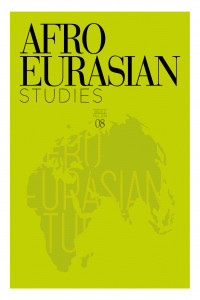International Tourism and Economic Development in Turkey: A Vector Approach
International Tourism and Economic Development in Turkey: A Vector Approach
tourism earnings, economic development, Turkey, VECM Granger causality test,
___
- Akinboade, O., and L. Braimoh. (2010). “International tourism and economic development in South Africa: a Granger causality test.” International Journal of Tourism Research, vol. 12, no. 2, pp. 149–163.
- Algieri B. (2006). “International tourism specialization of small countries.” International
- Journal of Tourism Research, vol. 8, no.1, pp. 1–12. Arslantürk, Y., and S. Atan. (2012). “The Dynamic relationship between economic growth, foreign exchange and tourism incomes: An econometric perspective on Turkey.”
- Journal of Business Economics and Finance, vol. 1, no. 1, pp. 30-37. Belloumi M. (2010). “The relationship between tourism receipts, real effective exchange rate and economic growth in Tunisia.” International Journal of Tourism Research, vol.12, no. 5, pp. 550–560.
- Brau, R., A. Lanza, and F. Pigliaru. (2003). “How fast are the tourism countries growing?
- The international evidence.” Nota di Lavaro 85 2003. Fondazione Eni Enrico Mattei.
- Brau, R., A. Liberto, and F. Pigliaru. (2011). “Tourism and development: A recent phenomenon built on old (institutional) roots?” The World Economy, vol. 34, no. 3, pp. 444-472.
- Unrestricted Cointegration Rank Test (Maximum Eigenvalue) Prob.** Eigenvalue Statistic 467072 52.09762 334785 26.92288 174035 10.61708 071537 2.968976 3. 3.841466 0.0849 0.071537 2.968976 3.841466 0.0849 49471 0.2362 0.174035 7.648107 14.26460 0.4156 At most 2 At most 3
- Trace test indicates 1 cointegrating eqn(s) at the 0.05 level * denotes rejection of the hypothesis at the 0.05 level **MacKinnon-Haug-Michelis (1999) p-values
- Vector Error Correction Estimates LGDP 0.025510 (0.05470) 0.46639] 2.11805] 4.12018] 19441]
- Cointegrating equations Included observations: 124 after adjustments Standard errors in ( ) & t-statistics in [ ]
- ISSN: 2147-110X
- Yayın Aralığı: Yıllık
- Başlangıç: 2012
- Yayıncı: Musiad (Independent Industrialists and Businessmen's Association)
International Tourism and Economic Development in Turkey: A Vector Approach
Education and Consumption Differentials: Evidence from an Emerging Country
Foreign Direct Investment and Private Sector External Financing: Do Credit Ratings Matter?
The Narrow Pathway to A Sustainable Energy System
Iran’s Changed Perception Concerning its Role in Afghanistan Following Soviet Disintegration
Determining Strategic R&D Sectors In Turkey: An Import-Based Approach
